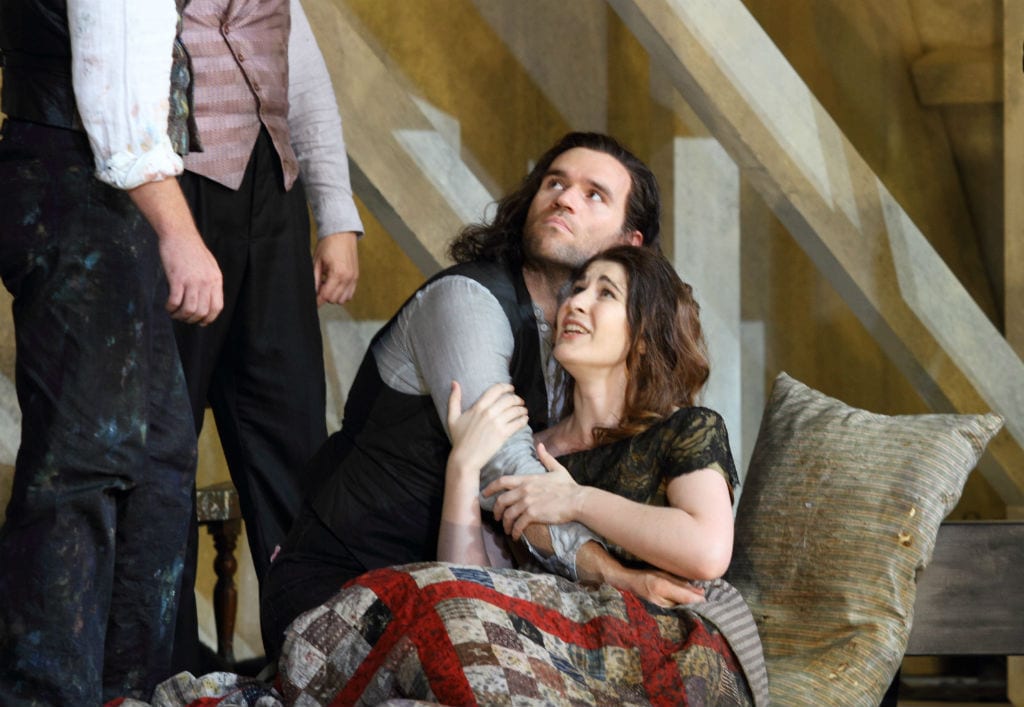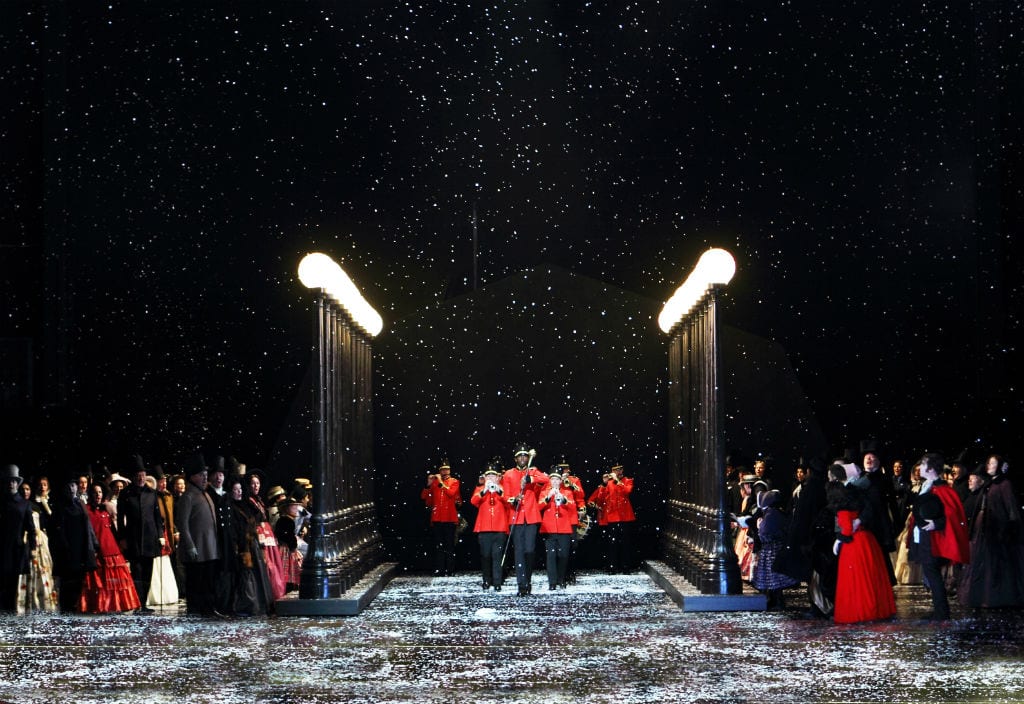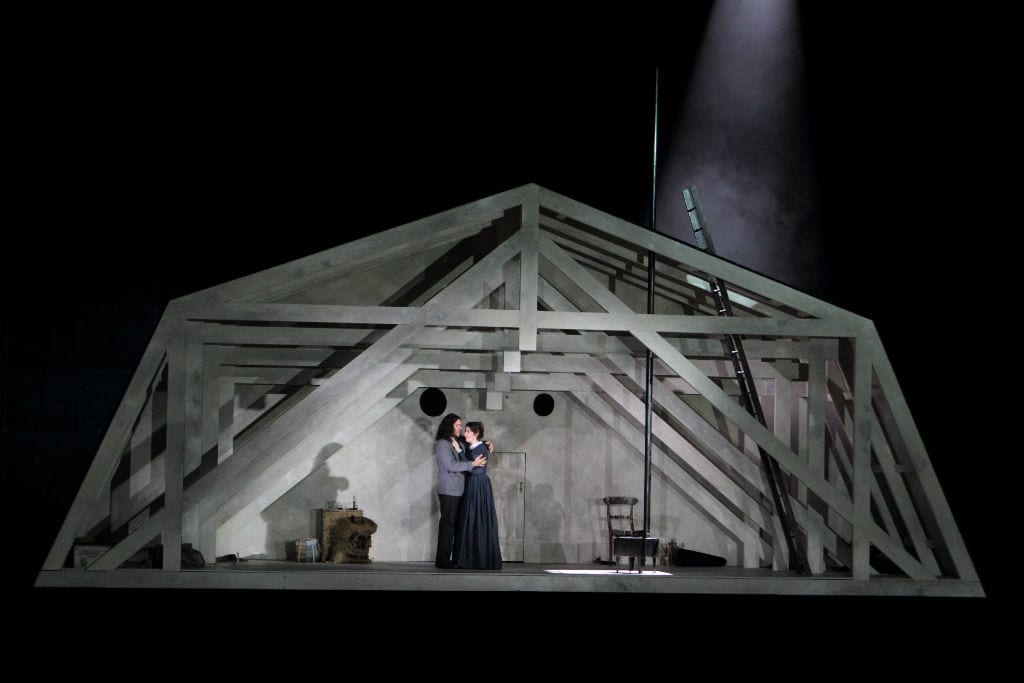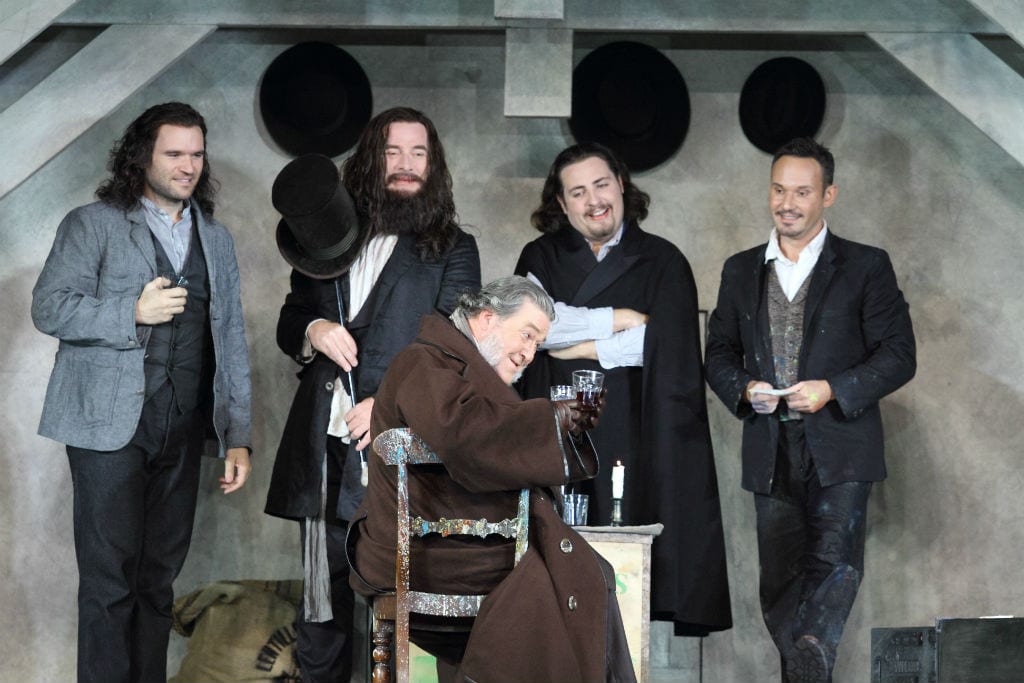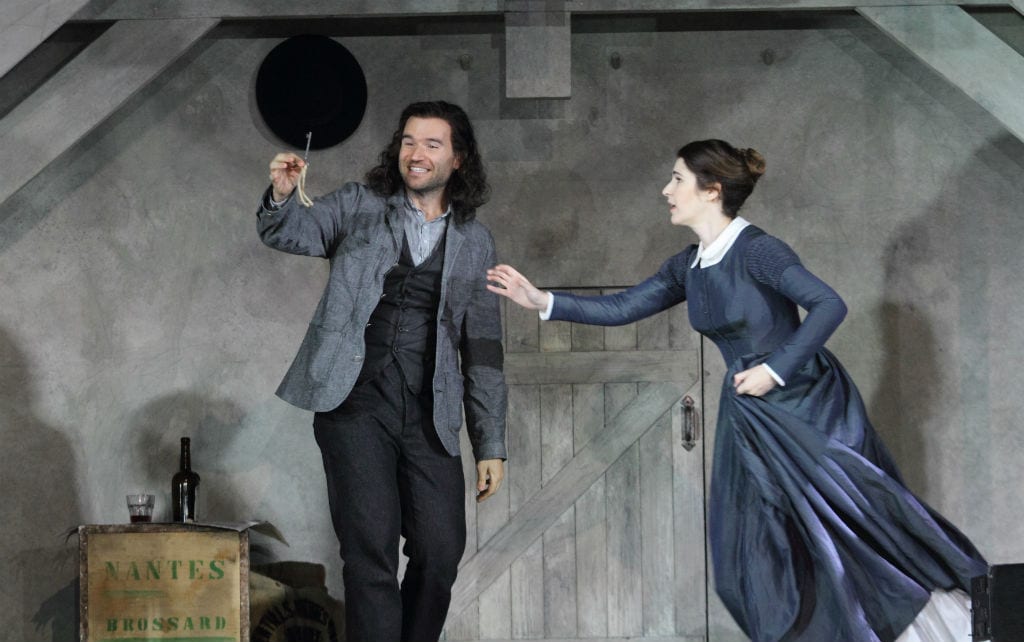Covent Garden’s new production of La Bohème, replacing the much loved Copley version which has been re-appearing for forty years, is splendid but perplexing. As director, Richard Jones is considered a very safe pair of hands. Indeed, he presents a coherent and moving picture of the love affair between Rodolfo and Mimi, and he sets it within a series of scenes of Parisian life that are stylishly modern in design but conjure up a convincing picture of a city where private poverty and public luxury can flourish side by side. But do the four acts hang together? – I have doubts.
The story is of four young men sharing a freezing attic in central Paris – this production is set in the latter part of the nineteenth century and, with the constantly falling snow, echoes of Dickensian schmaltz were only just avoided. Rodolfo the poet meets and falls in love with Mimi, the frail seamstress who lives downstairs. Marcello the painter is in and out of love with Musetta, a singer and flirt-about-town. The drama traces the passionate but doomed love affair of Rodolfo and Mimi, who loses her battle with consumption, the scourge of the urban poor of those times.
This production has many strengths. La Bohème benefits when directors ensure that the six main characters are a balanced team and avoid putting big stars in the two main roles. Nicole Car as Mimi and Michael Fabiano as Rodolfo are splendid but all six of the main roles here are well sung by young singers of real talent and they work together so effectively that the ensemble which is at the heart of the drama shines through. Nicole Car is a passionate and angry Mimi – she makes us feel that she will fight her illness all the way and not just fade meekly away. Michael Fabiano has commanding stage presence and his seduction of Mimi doesn’t shy away from the traces of sexual predator in the character’s behaviour – laying down a blanket on the floor in the hope of sex before agreeing to take her out on the town. On this opening night his voice was always thrilling but the sound was not always beautiful.
The set design was disconcerting in that there was a jarring change of tone between the first and second act. The first (and last) scenes were set in an almost impressionistic version of a Parisian garret – a tiny stove sometimes puffed out smoke through a tall chimney into a stage sky full of snow. The second scene was full of life and colour with shopping arcades and a crowded Café Momus being wheeled across the stage. The visual spectacle was fun but some of the scene changes were clunky and slow. And the climactic act 3, set in the snowy square outside the Inn by the city gates, was bleak and very moving but the gradual shift of the Inn building as it moved mysteriously upstage distracted from the pathos and the wonderful singing.
The orchestra was on top form. Antonio Pappano never seems to put a foot wrong and, in the Italian repertoire, it is now difficult to think of any conductor who could rival him at this opera house. The augmented chorus, children and all, sounded as if they were having great fun.
This is a very fine Boheme. The piercingly sad ending is fully brought to life and the singing and playing were of the highest quality. If you cannot get a ticket to see the opera at Covent Garden the performance on 20 September will be relayed to many cinemas. It is already a fine production – by then, it may well have settled into a superb one.


